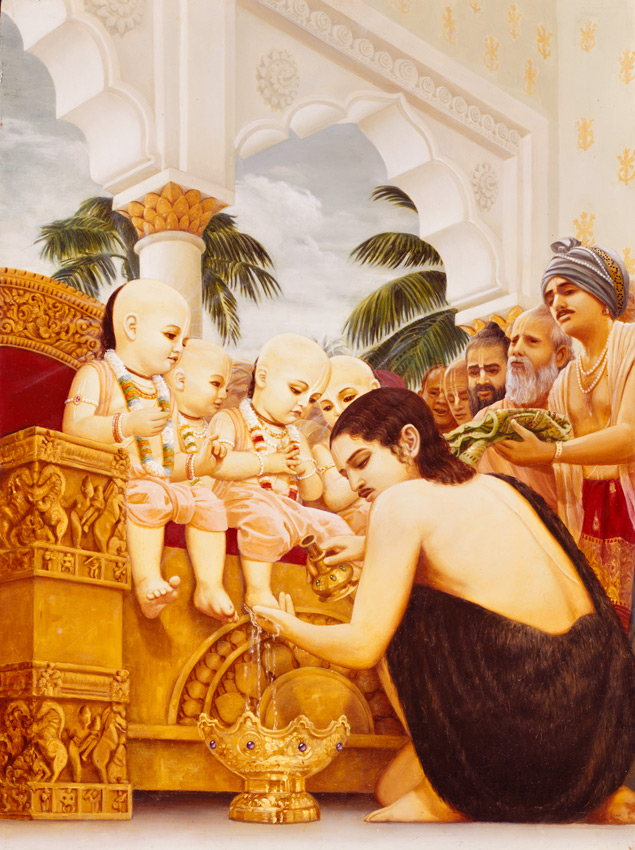Wednesday, September 28, 2022
Saturday, September 3, 2022
Rama Agastya Hanuman Veda
An incident about the meeting of the four Kumaras with Vishnu's avatar Rama is narrated in the Uttarakanda of the Ramcharitmanas.
https://freeglobaluniversity.blogspot.com/search/label/Tulsi
The Kumaras once stayed in the hermitage of the sage Agastya, who told them about the glory of Rama.
https://freeglobaluniversity.blogspot.com/search/label/Agastya
So to meet Rama, they went to a forest grove where Rama with his brothers and disciple Hanuman had come.
https://freeglobaluniversity.blogspot.com/search/label/Drama
https://freeglobaluniversity.blogspot.com/search/label/Complete
Rama and his brothers were so pleased with meeting the four enlightened sages that they paid obeisance to them. The sages were wonderstruck looking at the divinity of Rama that they prostrated before him and out of great ecstasy started shedding tears of happiness. Rama looking at the sages was deeply impressed and asked them to be seated and praised them for their great achievements and their erudite knowledge of the Vedas and Puranas. The four Kumaras were also delighted to hear the words of praise showered on them by Rama. They in turn extolled his great virtues in a hymn.
https://freeglobaluniversity.blogspot.com/search/label/Veda
Four Kumaras preaching in the Mahabharata
Then Sanatkumara categories all beings into six colours depending upon the proportion of the three gunas:
https://freeglobaluniversity.blogspot.com/search/label/Modes
- dark (Tamas is high, Rajas is mid, Sattva is low),
- tawny (Tamas is high, Sattva is mid, Rajas is low),
- blue (Rajas is high, Tamas is mid, Sattva is low),
- red (Rajas is high, Sattva is mid, Tamas is low),
- yellow (Sattva is high, Tamas is mid, Rajas is low) and
- white (Sattva is high, Rajas is mid, Tamas is low).
- ^ Mahabharata Published by Geeta Press in Gorakhpur. Written in Hindi.
- ^ The Mahabharata of Krishna-Dwaipayana Vyasa Santi Parva translated by Kisari Mohan Ganguli [published between 1883 and 1896]
Four Incarnations Due to Four Kumar / Note / Links
https://freeglobaluniversity.blogspot.com/search/label/Tulsi
http://en.wikipedia.org/wiki/Jaya-Vijaya
https://www.youtube.com/results?search_query=Jaya+Vijaya+vishnu
Take Four Incarnations as
1. Hiranyakshipu, Hiranyaksha
2. Ravana, Kumbahkarana
3. Shishupala, Dandavakra
4. Jagai, Magai
To Liberate Them Vishnu Appears as Four Incarnations
Friday, August 5, 2022
Vamadeva
- the three sounds (A,U,M),
- the 'Trinity of gods',
- the three gunas, the three souls (Jivaatma, Pratyagatma and Paramaatma),
- the three powers,
- the three chandases (metres),
- the three Vedas*++,
- the three realms or states (lokaas) of existence,
- the Trishavanas (ritual baths at dawn, noon and sunset).
- One who has reviled at cows or the ladies of another's family, or
- one who has betrayed them,
- one who spoils fullgrown crops,
- one who purposely hurts the minds of others,
- one who sets houses on fire,
- one who sells such holy things as betel leaves and the vedas,
- one who is given to uttering falsehood,
- one who accepts base things from persons of a base temperament,
- one who commits adultery with widows and Shudra women-all those who commit such other sins as these,





